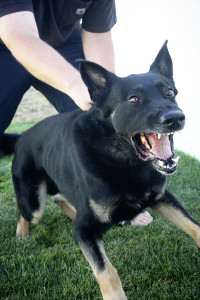Pit Bull Mauls Four Year Old and Internet Explodes With Stupidity
If you are a dog lover and travel the virtual halls of Facebook it’s likely you’ve read the story, Pit Bull mauls four year old in Phoenix. The story is tragic. As the father of four young kids I ache for this young boy who will be forever traumatized and will go through excruciating pain. Since this story came out, though, I’ve been asked several times for my opinion. In thinking about the case and reading the information that is available online I came up with several thoughts. They don’t form a narrative, essay-type response. Rather, my thoughts are formed in bullet points, random thoughts strung together. I’m not a guy who uses foul language. So understand that my following language is about as rough as I get. In other words, I’ve got some strong opinions on what is going down:
- What the FRACK is wrong with you people? By ‘you people’ I’m referring to the thousands of people who have rallied in support of…the dog! I love dogs, I think that goes without saying. As of the last reading (this may have changed) the public had raised more money to save the dog from being put down than had raised for the boy who was sitting disfigured in a hospital bed. How is this possible? Now I know that you can advocate for saving the dog, Mickey, AND have full sympathy for the poor kid. These aren’t mutually exclusive sentiments. But the fact that the dog is raising more money than the kid is the public’s way of voting with their wallets and saying that saving the dog is more important than helping the kid. It’s shameful.
- Yes, you can train the FRACKING dog. So what? I’ve seen many people commenting online that ‘hey, we can train the dog and fix the problem! Don’t put him down!’ Let me get this clear. I am 100%, unequivocally in favor of putting the dog down. I don’t arrive at that conclusion lightly. I am typically the last guy jumping into the swimming pool of ‘kill the dog!’. In fact, at my company we’ve successfully trained hundreds of dogs who have bitten in the past.
But look at the facts here. The kid approached the dog. There may or may not have been a bone depending on the report. The dog attacked the kid with some insane intensity. Tell me…what amount of training will make you feel comfortable ever putting this dog near a child again? As a dog trainer I’m hugely confident (read: massive ego) in my ability to fix aggression cases. As a father, however, there is no way this dog is ever coming near something I love no matter how much training. I’m not mad at the dog. I don’t wish to kill the dog in revenge. I simply recognize that there is no amount of training on this green earth that would ever make me feel comfortable with this dog.
- Pit bull apologists. What the FRACK, guys? Let me be clear. I’m a fan of Pit Bulls. I like them. I think they’re fun. I defend them when given the chance. But here’s the problem. Those of you who are Pit Bull apologists are often doing more harm than good. You’ll say things like:
“It’s not the breed, it’s the owner!” What about all the great Pit Bull owners who have Pit Bulls with aggression problems? You know there are a lot of them, right? We get plenty of dog owners who come to us with Pit Bulls that have aggression problems. You want to know the common denominator with every single one of them? They’re all good dog owners. If not, they wouldn’t be coming to a trainer and paying through the nose to fix an aggression problem. Could they have done things better? Sure. Everyone can. But these are not bad dog owners.
“Pit Bulls only do this when they’re trained to be aggressive/neglected/abused/beaten/etc.” Bull crap. I’ve worked with dozens of Pit Bulls who have aggression issues. None of these dogs have been trained to be aggressive or have been beaten and most haven’t been abused. (Side note, I’ve also worked with dozens of Labradors, German Shepherds, Dalmatians, and Chihuahuas who were aggressive who also weren’t beaten or abused.)
Every time you apologists pretend that the Pit Bull isn’t an insanely powerful breed, with a propensity for strong drives, with an intensity that other breeds don’t always have…and you pretend that all of them are sweethearts until some jerk of an owner comes along and turns them bad…YOU. AREN’T. HELPING. PIT. BULLS!
Your heads are in the sand. Yes, I’m fully aware of the statistics that other breeds bite with more frequency. I’m not saying that a Pit Bull is any more likely than a Labrador to bite someone. But I am saying that a Pit Bull is infinitely more likely than a Labrador to maul a kid and put him in the hospital… or kill a dog (which this dog Mickey has also done)…or cause some real damage to another pet. Does that make all Pit Bulls bad? Or most of them? Or even a decent percentage? Not by a long shot! But stop pretending that you are doing your favorite breed a favor by pretending that they aren’t capable of mayhem. They are. They’re capable of it when they’re treated poorly. They’re capable of it when they’re treated well. So is any dog. So stop thinking that all other breeds have their warts and the Pit Bull is a saint unless provoked. Recognize that your breed is a powerful animal, often with powerful drives, who has often been poorly bred and comes to the table with a weak nervous system.
- What the FRACK is wrong with these dog owners? I do not understand the mentality of someone who buys a dog and puts it on a chain in a yard where someone has access to that dog. This should never happen. Ever. Not ever. Not with a Pit Bull. Not with a Samoyed. Not with a Saluki or a mixed breed or a jungle cat.
If you put any dog on a chain it becomes infinitely more likely of attacking. I won’t get into the deep psychology of what I’m referring to but there is something I’ll call ‘barrier aggression’ that makes a dog more likely of attacking. Even very sweet dogs can do something really stupid when they are tied out.
So I haven’t seen the set up at this person’s house. I’m not sure how it looks, where the yard is, where the dog was tied up, etc. But I will tell you this. If you EVER have reason to tie your dog out (and if you do, consider why you have a dog in the first place) you had better tie that dog out where you are 100% guaranteed that no one can ever come up to your dog. Period. Are we clear on that?
- What the FRACK is wrong with all of these online commentators? I recognize that I am awfully hypocritical at this moment. I’m harping on online commentators while being an online commentator. The difference is, though, that I’m right. I always am, after all. (Side note, my wife always gives me a hard time saying ‘you always think you’re right in any argument!’ My response is ‘of course! Who walks around thinking they are wrong?’)
Let me be a bit more specific by calling out a few comments I see on a Facebook page for saving Mickey. The page has over 40,000 likes, by the way. Maybe we should see if every one of them could go give that poor kid a $5 note. Here are some comments:
“I can’t believe his family just gave up on him without a fight! Dogs are loyal and would never betray their owners! Shame on you Mickeys family shame on you!”
What the FRACK does loyalty have to do with this? The dog did kill a dog and nearly killed a kid.
“I am thinking positive!! We will Save Mickey, he has done nothing wrong & he deserves to have true unconditional love for the rest of his life!! xo”
Nope. He doesn’t deserve trust for the rest of his life. He has killed things and almost killed others. If there was ever a dog not deserving of trust it’s this one. Seriously, what kind of mindset creates such an ignorant, idiotic statement?
If you head over to this Facebook page (no, I won’t link to it here) you’ll see thousands of comments. Most of them follow the vein of ‘the kid never should have been in the yard, it’s not the dog’s fault!’
The sad thing is I agree.
The kid never should have gone into the yard. And in a sense it’s not the dog’s fault that he was put in that position, not supervised, not trained, not socialized, or whatever.
But fault or not the results are the same. He ate this poor kid. And no matter the fault why is there such an outcry to save this animal who has proven to be dangerous on more than one occasion? Why isn’t more of this energy going to help this poor child? I’m an advocate for dogs but I’m also smart enough to realize that I don’t advocate for dogs by pretending that some dogs aren’t insanely dangerous.
This is an awful situation for everyone; dog, dog owner, child, children’s family, and anyone who cares about this situation. But willful ignorance is not the answer to tragedy.













